The Emotional Soviet Era World War 2 Monument of Dilijan
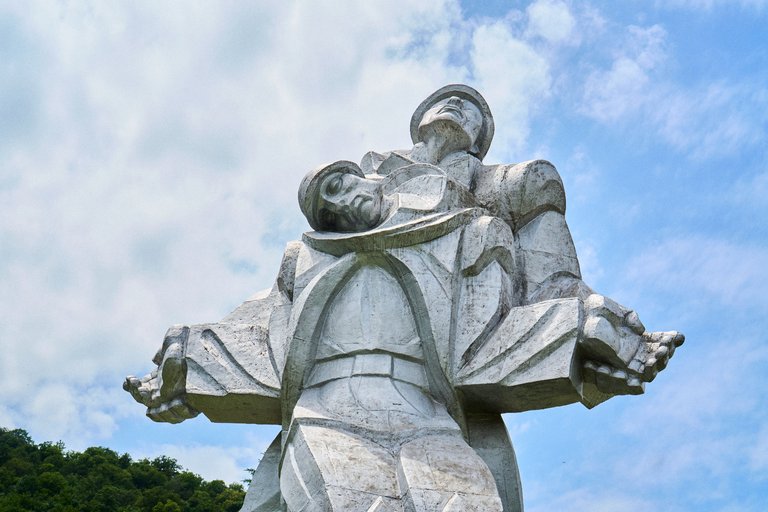
I've seen a fair share of monuments to the Second World War over the past two years. It's something you see in all areas of this region, and to no surprise given the massive losses these nations faced in their defence against Nazi Germany after a big mistake to attempt an invasion into Soviet land. Perhaps Nazi Germany's greatest failure along all the fronts that appeared, particularly given some relatively decent relations between the USSR and the Nazis beforehand. These monuments can be found in forgotten land. In the middle of nowhere, a huge statue may appear with the dates of the Second World War written at the feet, not documented on maps, mostly invisible to even those that drive by on their commutes between towns and villages. These are always powerful structures. Ones that really punch through with the human cost of the war, and for the Soviets, creating grand structures was not out of the ordinary, but I do feel that these are some of the most justified. To add, these monuments often contain the names of those within the area that gave their lives to defend their land from invasion and genocide. Georgians, Armenians, Azeris, and Russians. Men from the most peaceful and remote farmland regions that went off into Hell.
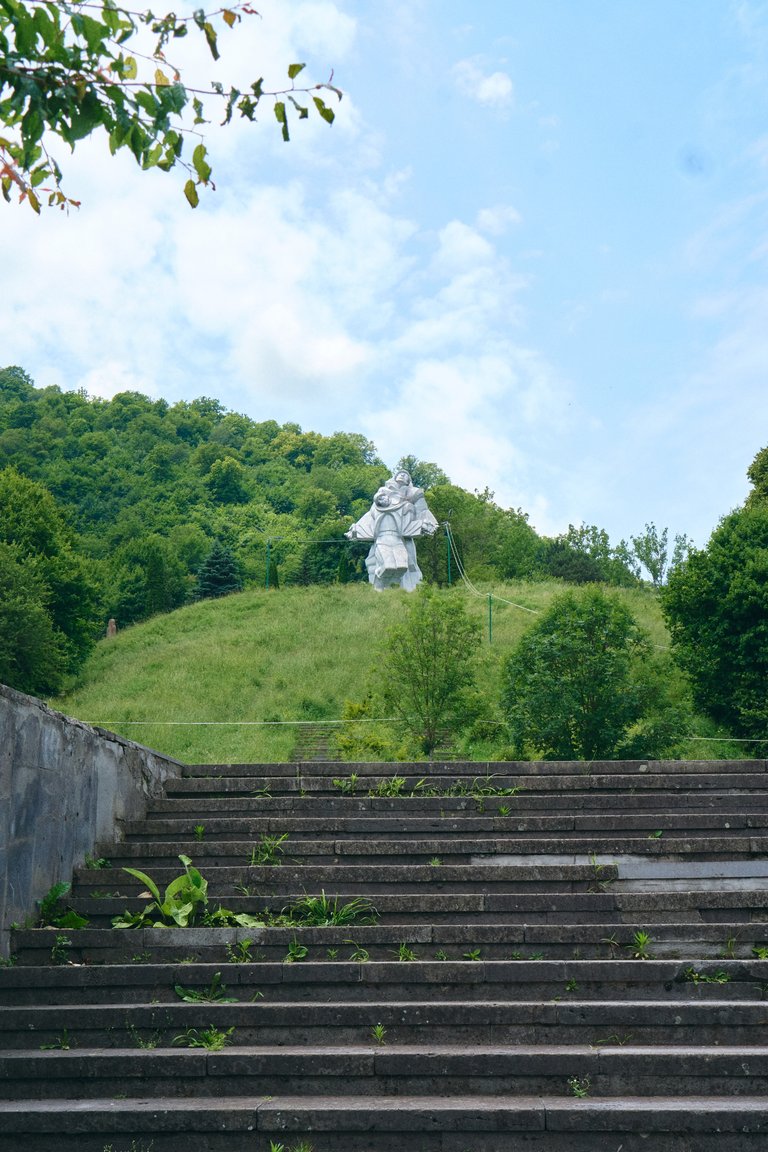
While in Dilijan, sipping on a little cappuccino in one of the few cafes in the small town, I roamed through Google Maps in search of unique things nearby to discover. Arriving in the town with little intention to begin with. I saw a Second World War monument that wasn't too far away that seemed like it'd be a good thing to check out. I didn't expect the thing we stumbled into in the end at all. The most powerful monument I've seen, one that really displays the horrors of war and the tragedy regarding the loss of life through it. Monuments of the Soviet era tend to display patriotism and great warriors, strong chiselled men running into battle with little fear. This was the total opposite. Perched up on the top of a mountain, the main monument displayed two soldiers, one holding the other. The one in front falling, injured in battle. Both soldiers depicting a tragic expression of grief.
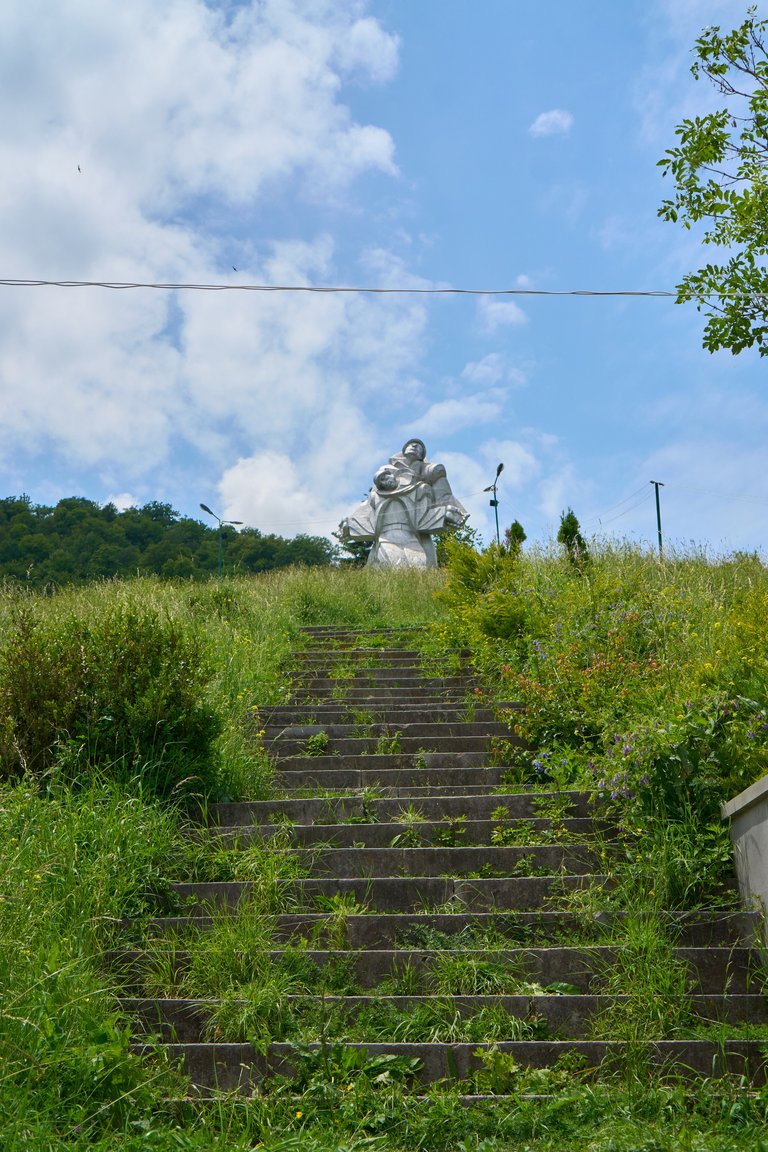
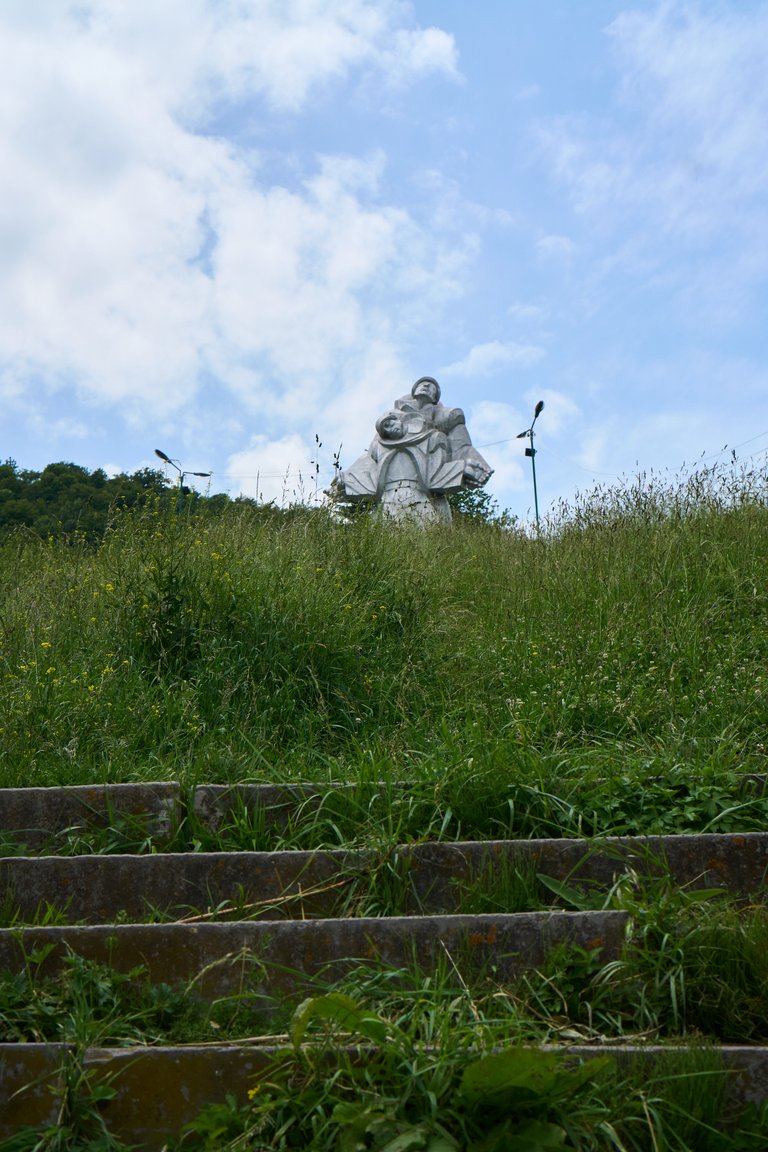
At the bottom of this mountain is an eternal flame within a red star, though the flame was not functioning on this day. I assume it does other times, but I noticed the interesting addition of a more recent development next to the location: a new type of monument. It remains unfinished and undergoing its construction, but I was surprised to see the similarities to its Soviet past. I suspect the eternal flame nearby was turned off for safety reasons pertaining to that new construction taking place, and not something more depressing. I have seen eternal flames in certain regions that are no longer functioning, mostly within Georgia. Where in Armenia even in more remote areas, these monuments are more maintained and appreciated. A little higher up was some traditional Roman-Armenian Christian symbols, a rock with a large cross and Armenian patterns carved out of it. A common sight throughout Armenia, some new, some incredibly old. An overgrown stairway went upward into the mountain. Though it wasn't clear whether it was possible to reach the monument itself.
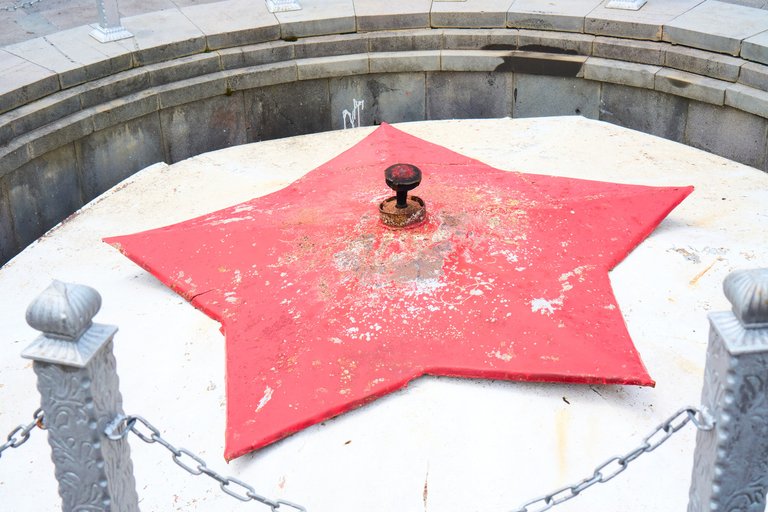
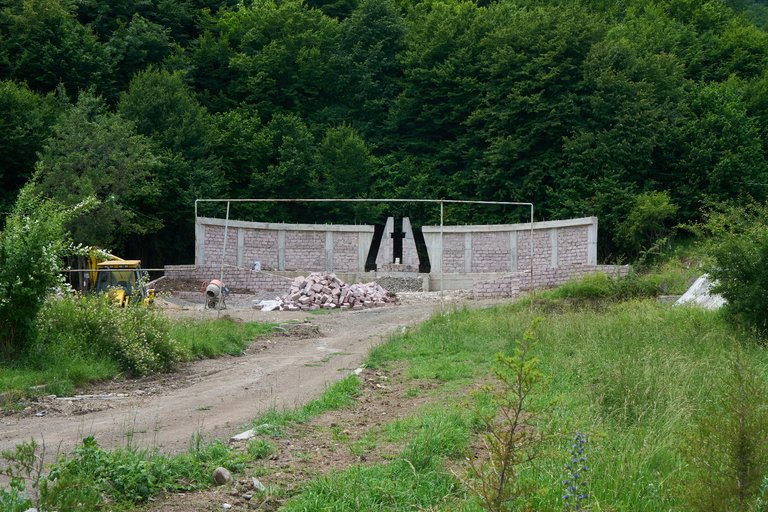
My curiosity got the best of me, and despite wearing shorts I figured I'd try to find a way up. Avoiding the insects and of course potential ticks in the overgrowth. The stairway to my surprise, still relatively overgrown, didn't go straight up the mountain like a cascade, but instead went around it. A steep little walk but not too difficult compared to how it looked. I reached the top and felt the power of the monument even more. Reaching an old graveyard that kept the citizens of Dilijan at rest, some more recent than others. Large prints of the people that lived and died in the area. Many unfortunately at a very young age, and not from war. To the side was a more of the monument, displaying the years of the war and the names of those that had died. Clear differences in the Soviet side of the monument and the more modern cemetery. I walked briefly throughout it and looked at some of the names and faces. The beautiful backdrop of Dilijan's vast forestry and mountains painted a less depressing picture of the location. These people really were at rest here. Far from the noise of cars, far from the development of cities. Resting within the breeze of the trees that flowed down from the mountains above.
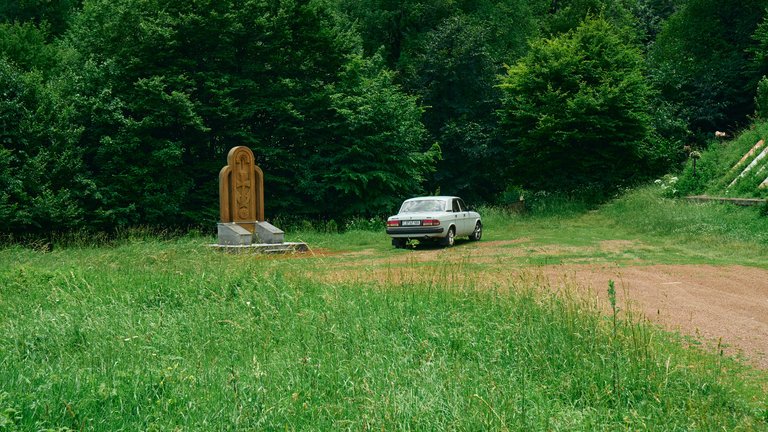
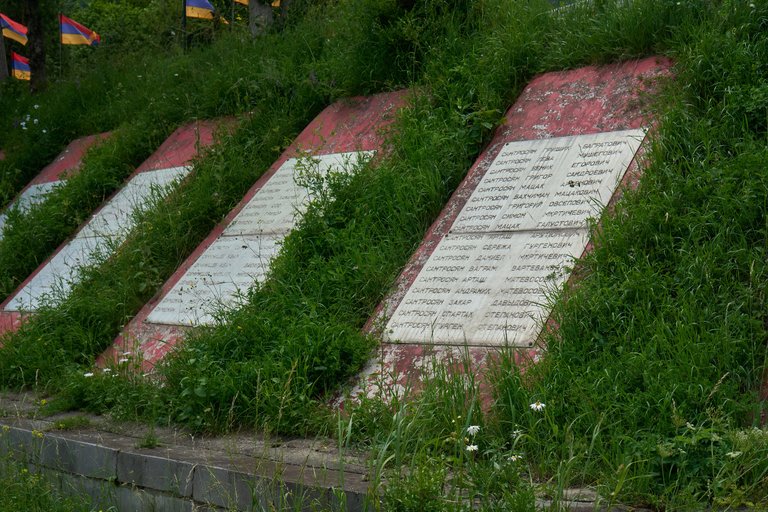
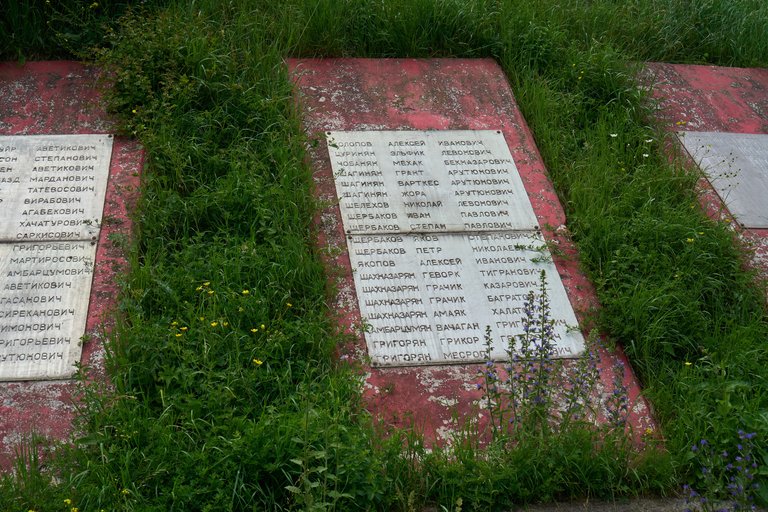
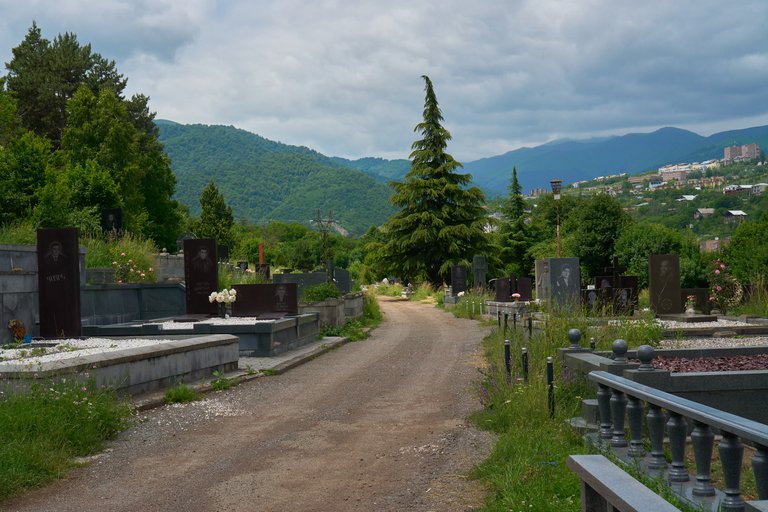
I later would read that 404 people from the region died in the war. With 22 being buried nearby.
I walked up to the monument, looking up as it towered over much of this little area of Dilijan. Quiet and with little going on below. It overlooked more peace. I really felt the emotion here, the monument's details incredibly strong, even down to the shape of the legs and the bending of the knees of the falling soldier. Really displaying the weight of both the monument and the other soldier in their attempt to keep them standing. I couldn't tell when this monument was created, though I suspect it was something that came about around the 1980s or 1970s, based on the dates of other monuments I've seen.
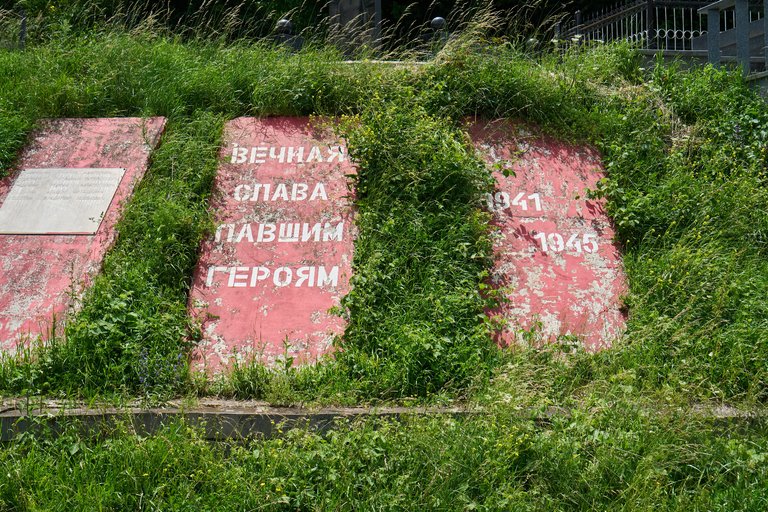
It was interesting seeing something like this in such a remote area, more interesting that it seemed overlooked by many of the other tourists that had appeared in the area; I guess they either know of it already or simply aren't that interested given Dilijan's two main points of interest these days being the banking sector as well as the natural hiking spots. Well worth a visit if you do end up here.
You can check out this post and your own profile on the map. Be part of the Worldmappin Community and join our Discord Channel to get in touch with other travelers, ask questions or just be updated on our latest features.
Congratulations, your post has been added to the TravelFeed Map! 🎉🥳🌴
Did you know you have your own profile map?
And every post has their own map too!
Want to have your post on the map too?
- Go to TravelFeed Map
- Click the create pin button
- Drag the marker to where your post should be. Zoom in if needed or use the search bar (top right).
- Copy and paste the generated code in your post (any Hive frontend)
- Or login with Hive Keychain or Hivesigner and click "create post" to post to Hive directly from TravelFeed
- Congrats, your post is now on the map!
PS: You can import your previous Pinmapple posts to the TravelFeed map.Opt Out
Hiya, @ybanezkim26 here, just swinging by to let you know that this post made it into our Honorable Mentions in Travel Digest #2610.
Your post has been manually curated by the @worldmappin team. If you like what we're doing, please drop by to check out all the rest of today's great posts and consider supporting other authors like yourself and us so we can keep the project going!
Become part of our travel community:
This monument reminded me of the monument in Khatyn.
That one is really powerful. What's the story behind it?
The Nazis burned the village. Almost everyone died. The father (a blacksmith) carries his dying son in his arms.
Congratulations @namiks! You received the biggest smile and some love from TravelFeed! Keep up the amazing blog. 😍 Your post was also chosen as top pick of the day and is now featured on the TravelFeed front page.
Thanks for using TravelFeed!
@for91days (TravelFeed team)
PS: TravelFeed is in social media to reach more people, follow us on Facebook, Instagram, TikTok, and X.